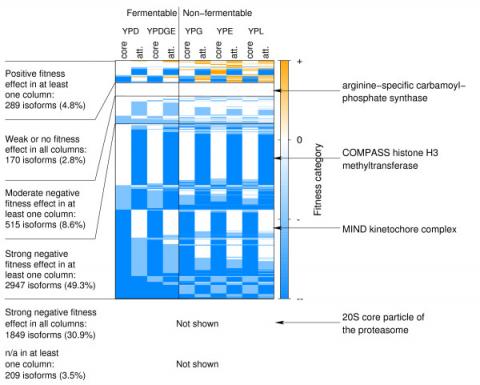Exploiting gene deletion fitness effects in yeast to understand the modular architecture of protein complexes under different growth conditions

Pache RA, Babu MM, Aloy P, Background Results Conclusion
BMC Systems Biology,
2009, 3, 74
Understanding how individual genes contribute towards the fitness of an organism is a fundamental problem in biology. Although recent genome-wide screens have generated abundant data on quantitative fitness for single gene knockouts, very few studies have systematically integrated other types of biological information to understand how and why deletion of specific genes give rise to a particular fitness effect. In this study, we combine quantitative fitness data for single gene knock-outs in yeast with large-scale interaction discovery experiments to understand the effect of gene deletion on the modular architecture of protein complexes, under different growth conditions.
Our analysis reveals that genes in complexes show more severe fitness effects upon deletion than other genes but, in contrast to what has been observed in binary protein-protein interaction networks, we find that this is not related to the number of complexes in which they are present. We also find that, in general, the core and attachment components of protein complexes are equally important for the complex machinery to function. However, when quantifying the importance of core and attachments in single complex variations, or isoforms, we observe that this global trend originates from either the core or the attachment components being more important for strain fitness, both being equally important or both being dispensable. Finally, our study reveals that different isoforms of a complex can exhibit distinct fitness patterns across growth conditions.
This study presents a powerful approach to unveil the molecular basis for various complex phenotypic profiles observed in gene deletion experiments. It also highlights some interesting cases of potential functional compensation between protein paralogues and suggests a new piece to fit into the histone-code puzzle.
Pubmed: 19615085
Direct link: 10.1186/1752-0509-3-74
